Benefits of Konasana (Angle Pose) and How to Do it By Dr. Ankit Sankhe
By Dr. Ankit Sankhe +2 more

Get,

to manage your symptom
Get your,


4 Cr+ families
benefitted

OTP sent to 9988776655



You’ve successfully subscribed to receive
doctor-approved tips on
Whatsapp

Get ready to feel your best.

Hi There,
Download the PharmEasy App now!!


Register to Avail the Offer
Send OTPBy continuing, you agree with our Privacy Policy and Terms and Conditions

Hi There,
Sign up on PharmEasy now!!
Trusted by 4 crore+ families

OTP sent to 9988776655



You have unlocked 25% off on medicines




Code: NU25
By Dr. Ankit Sankhe +2 more
Table of Contents
Yoga is an age old method of asanas (poses or postures) and pranayamas (breathing techniques). This yoga offers physical and mental benefits for all age groups. Yoga finds root in the Sanskrit word “Yuj” meaning union or to join. Mind body fitness involves muscular activity and a focus on awareness of self, energy, and breathing. Yoga is more like an art than a restricted workout routine, which believes that healing comes from within. Regular yoga training may help you feel better from head to toe. This section will highlight one asana called Konasana1,2. Let us discuss the Konasana and its health benefits.
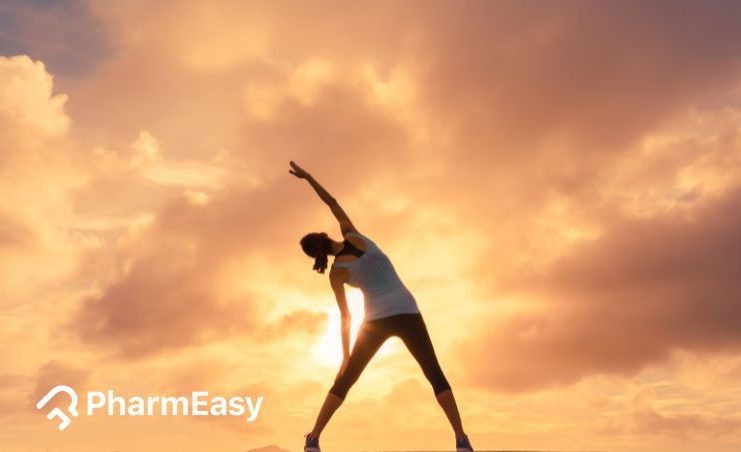
Konasana is also known as the sideway bending pose or the angle pose yoga. The word is derived from the Sanskrit words “Kona” meaning angle, and “asana” meaning pose or posture, translating to the angle pose in English. This posture has two variations, Konasana I and Konasana II both involve sideways stretching using both hands3.
Konasana must be done properly for maximum health benefits. One may perform Konasana in the following manner:
Did you know?
Konasana benefits are as follows:
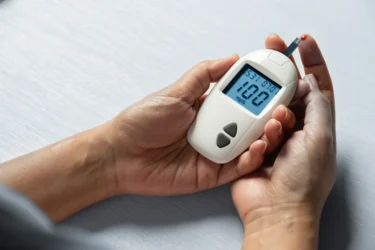
Diabetes (Type I and Type II) is a metabolic disorder or issue characterized by elevated blood glucose levels due to reduced synthesis or resistance of a hormone called insulin which regulates blood glucose. A study by Mahapure et al. in 2015 stated that yogasanas like Konasana might help reduce blood glucose levels. It is assumed that a side stretch during Konasana may result in alternate abdominal contractions and relaxations, which may result in increased secretion of insulin (the hormone that regulates blood glucose). Additionally, Konasana may help reduce oxidative stress, which is important in diabetic complications. This indicates that Konasana may help in managing diabetes. However, this asana should not be considered an alternative to modern medicine. Kindly consult a doctor for proper treatment. Additionally it is advised to exercise this asana under the supervision of a qualified trainer4.
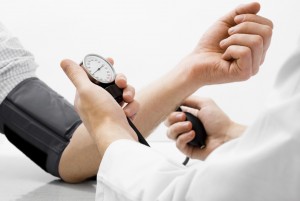
Hypertension or high blood pressure has no noticeable symptoms, but if left untreated, it may become a risk factor for many other diseases. Lack of exercise and inactivity can lead to hypertension. Yoga may reduce high blood pressure. Along with pranayamas (breathing techniques), a few selected yogasanas, like Konasana, are prescribed for managing hypertension. Thus asanas like Konasana may positively impact blood pressure, but this asana should not be considered an alternative to modern medicine. Kindly consult your doctor for the proper treatment of hypertension. Additionally, it is recommended to perform this asana under the supervision of a qualified trainer5.
According to what I’ve observed, regular practice of Konasana might support clearer and healthier skin. It may help with frequent boils and managing pimples on the skin6.
Dr. Siddharth Gupta, B.A.M.S, M.D (Ayu)
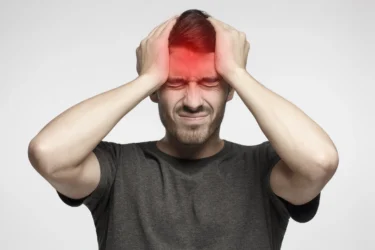
A brain attack damages the brain due to the blockage of the blood supply. It has been found that the Konasana may improve blood circulation to the brain and help manage and may reduce the risk of stroke. The Health Ministry of India approves the Konasana and its potential for preventing stroke. This indicates that the Konasana may positively impact stroke. However, it is recommended not to rely on this asana alone and consult a doctor for proper stroke treatment. Additionally, one should perform this asana under the guidance of a qualified trainer3,5.

Regularly performing different yogasanas and pranayamas may help in reducing the symptoms of depression. Asanas like Konasana are approved by the Ministry of health and Family Welfare, India, for managing depression. Thus, the Konasana may help in alleviating depressive symptoms. However, it is advised to consult a doctor for proper treatment of depression and not rely on this asana alone. Additionally, one should perform this asana under the supervision of a qualified trainer5.
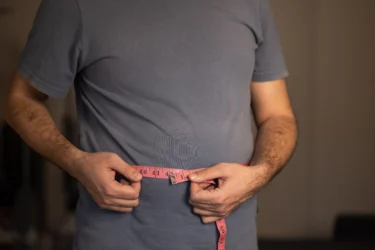
Obesity is the accumulation of more body fat which may increase the risk of several diseases. It is now evident that regular yoga (Konasana) may positively impact obesity by reducing body weight and excess body fat. The Ministry of Health and Family Welfare approved the Konasana for managing obesity. However, one should not consider this asana an alternative to modern medicine. Kindly consult your doctor for proper treatment. Additionally, it is recommended to exercise this asana under the supervision of a qualified trainer5.
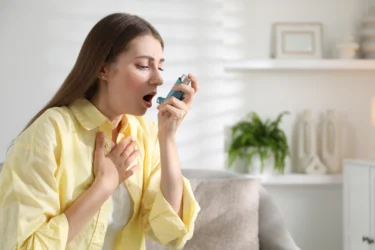
Asanas like Konasana is approved by the Ministry of Health and Family Welfare, India, for managing asthma. This sideway stretch may help in opening chest muscles and improving breathing. Thus, the Konasana may positively impact asthma. It may not help in clinically treating asthma but may provide symptomatic relief. However, it is advised to consult a doctor for proper treatment of asthma and not rely on this asana alone. Additionally, one should follow this asana under the supervision of a qualified trainer5.
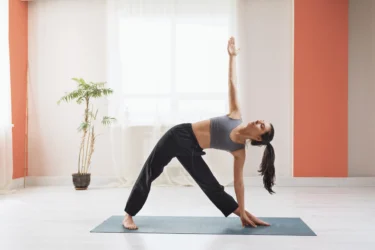
The above-mentioned benefits of Konasana are not yet proven in any human study and are based on a literature search.
Yoga exercise may help develop the mind and body it is not an alternative to modern medicine or treatment. You Should not rely on Yoga alone to treat any condition. Instead, please consult a qualified doctor who can assess your condition and advise accordingly. However, it is necessary to perform and learn Yoga under the supervision of a yoga master to avoid any injuries.
In my view, Konasana may have potential benefits for increasing height. By practising this yoga asana, you engage in a deep side stretch and twist, which may enhance overall body flexibility and alignment. However, it’s important to note that individual results may vary, and maintaining a healthy lifestyle with proper nutrition is essential for optimal growth and development6.
Dr. Smita Barode, B.A.M.S, M.S.
Conditions, and contraindications of Konasana, include3:
It is advised to perform Konasana under the guidance of a qualified trainer. Additionally, this asana should not be considered a substitute for modern medicine.
I may provide you with a beneficial tip. Practising Konasana slowly and mindfully may offer relief from sciatica. However, always remember to listen to your body and consult a healthcare professional if needed6.
Dr. Rajeev Singh, BAMS
Konasana yoga is also known as the sideway bending pose or the angle pose yoga. The word is derived from the Sanskrit words “Kona” meaning angle, and “asana” meaning pose or posture, translating to the angle pose in English. This asana may positively impact diabetes, asthma, hypertension, obesity, stroke, and depression. Additionally, Konasana may help tone and strengthen side muscles, improve digestion, and relieve constipation and back pain.
Also Read: Benefits of Vakrasana (Spinal Twist Pose) and How to Do it By Dr. Himani Bisht
Konasana is also known as the sideway bending pose or the angle pose. The word is derived from the Sanskrit words “Kona” meaning angle, and “asana” meaning pose or posture, translating to the angle pose in English3.
Konasana yoga has two variations, Konasana I and Konasana II; both involve sideways stretching using both hands3.
First, roll out a mat and stand in Tadasana. Ensure your body is aligned from head to toe, your feet are placed at shoulder level, and your neck is straight. Take a deep breath and proceed. Next, slowly raise your right arm over the head, up in the sky, and bend your upper body to the right meanwhile, the left hand will be placed sideways, touching the left thigh. Keep the legs and hips fixed only curve the spine sideways, giving it a side stretch. Continue to hold this position for six seconds. Next, exhale and return to the original position. Repeat the above steps with the left arm. This sequence completes one round of Konasana3.
Regular training in this asana may help in reducing diabetes, hypertension, asthma, stroke, and depression and managing obesity. Further, this asana may help strengthen the side muscles, relieve constipation, and improve digestion4,5.
People with hypertension and other cardiac complaints, spinal or neck injuries, and pregnant women should avoid doing this asana3.
Disclaimer: The information provided here is for educational/awareness purposes only and is not intended to be a substitute for medical treatment by a healthcare professional and should not be relied upon to diagnose or treat any medical condition. The reader should consult a registered medical practitioner to determine the appropriateness of the information before consuming any medication. PharmEasy does not provide any guarantee or warranty (express or implied) regarding the accuracy, adequacy, completeness, legality, reliability, or usefulness of the information; and disclaims any liability arising thereof.
Links and product recommendations in the information provided here are advertisements of third-party products available on the website. PharmEasy does not make any representation of the accuracy or suitability of such products/services. Advertisements do not influence the editorial decisions or content. The information in this blog is subject to change without notice. The authors and administrators reserve the right to modify, add, or remove content without notification. It is your responsibility to review this disclaimer regularly for any changes.
Comments

Leave your comment...
You may also like
Comments